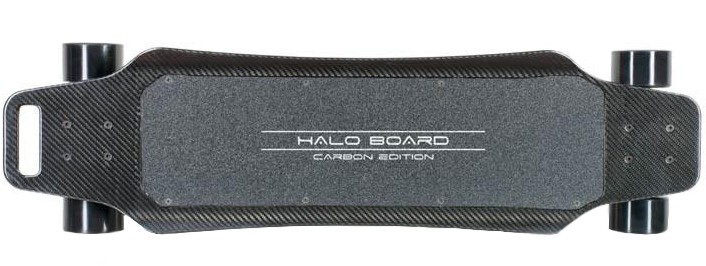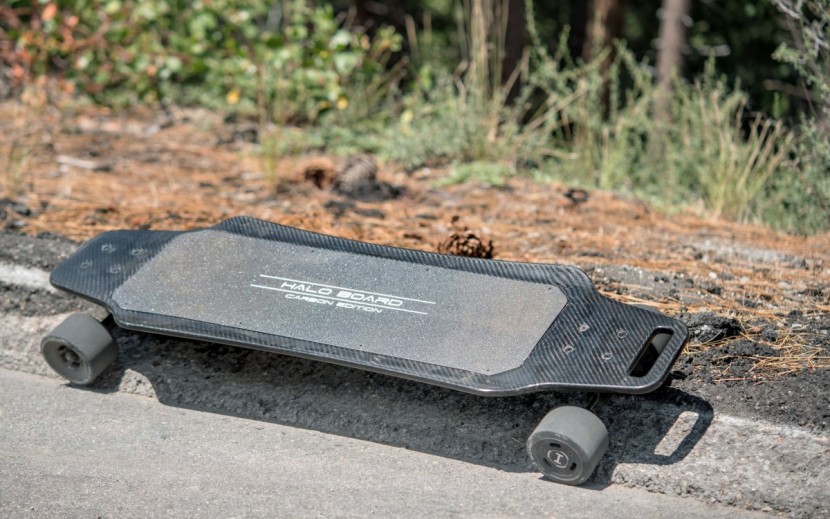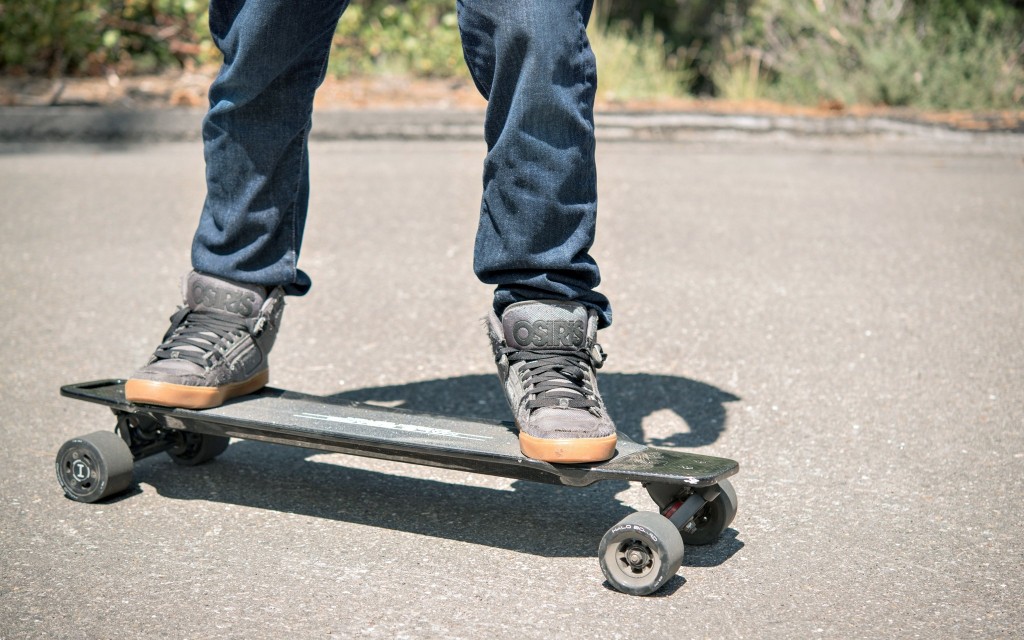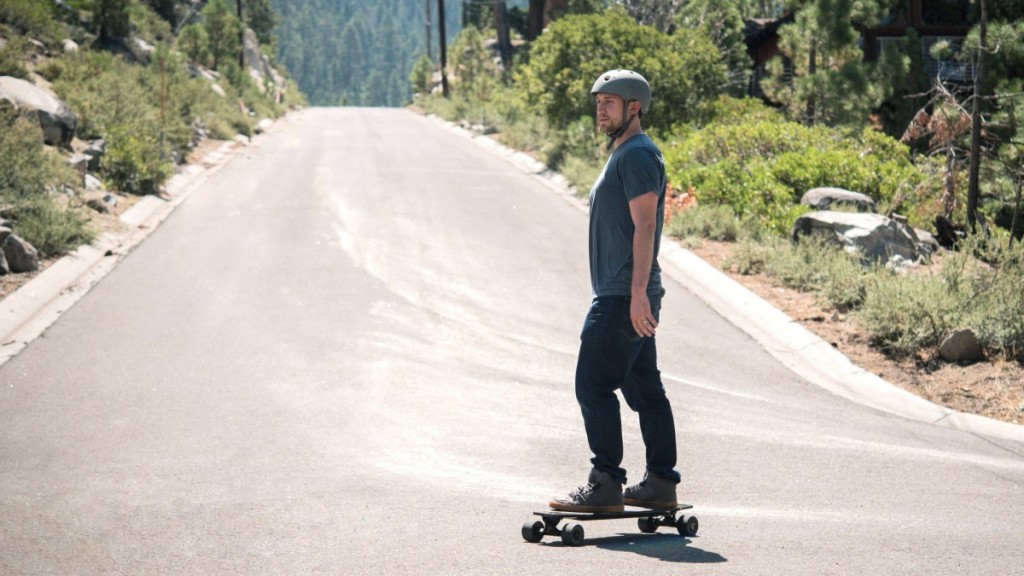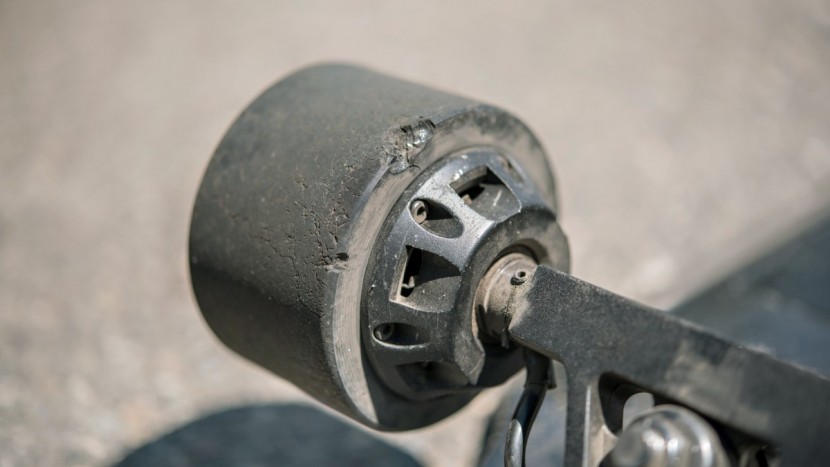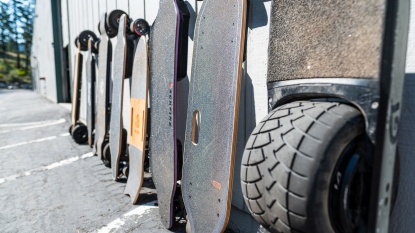Halo Board Carbon Edition Review
Our Verdict
Our Analysis and Test Results
In June 2017 Halo Board announced a new electric skateboard, the Carbon Edition Halo Board, which replaced their now discontinued one-wheel electric skateboard. We purchased one right away, and put it through an extensive test. Our review follows.
Speed
Earning the most weight out of all of our rating metrics, Speed was of paramount importance in our test. This metric made up 25% of the total score, with the Halo Board delivering a decent showing, meriting a 7 out of 10 for its efforts. We tested both the acceleration of each board, as well as its top speed, to determine the score in this metric.
This board actually scored very well in our top speed test, finishing near the top of the group.
The board did feel a little unsteady at its top speed, wobbling slightly, but not giving us undue cause for concern.
However, this model couldn't carry its top-tier performance into the second test of this metric: Acceleration. The Halo Board Carbon was about average, taking about 5.17 seconds to complete our 50' test track when starting from a standstill — significantly more than the 3.17 seconds of the top model.
Range
Ranking second to speed, our Range metric takes credit for the next largest portion of the overall score — 20%. We compared how long each board lasted on flat ground with an economical riding profile, as well as how long it took each board to charge. Our tester is an average-sized, 6' adult male, so lighter riders may make it further and heavier riders a shorter distance, but the overall ranking of boards should remain consistent. The Halo Board Carbon again delivered a solid performance in this metric, earning a 7 out of 10 for its performance.
The Halo Board Carbon made it 14.7 miles before quitting — by far the longest out of any of the hub motor boards that we tested — but couldn't quite match the 23.4 miles of the Metroboard. The Halo Board still stacked up quite favorably to the rest of the bunch.
This board kept up an average speed of 12.6 mph throughout the test, in riding mode 2. This board also charged quite quickly, only taking about two hours to top off — even faster than the manufacturer's claimed time of three hours.
Ride
Following Range, Ride comprised the next largest component of the total score, taking responsibility for 20% of the total score. This metric consisted of evaluating and comparing how comfortable each board is to ride, how well it handled the bumpy and rough terrain, unexpected cracks, and which board we were overall drawn to. The Halo Board Carbon didn't particularly impress us in this set of tests, earning a 5 out of 10 for its overall lackluster performance.
This board did not handle cracks in the road well at all. It was an extremely jarring experience to hit a crack with any sort of speed on this board. This board is also quite terrible at traversing bumpy terrain. It's an exceptionally bumpy ride if the road isn't perfectly smooth and is definitely not a very enjoyable experience. However, this board is quite comfortable to ride on flat ground, with a solid platform. Overall, we were reasonably drawn to this board and would pick it on a semi-frequent basis — if we knew the road was smooth.
Hills
Our Hills metric accounts for 15% of the total score, and true to its name, assessed the prowess of each board at climbing hills. We went up successively steeper hills until the board could no longer make it up at a reasonable speed, using the maximum grade of hill climbed to determine the score. The Halo Board Carbon didn't do particularly well, earning a 4 out of 10 for its less than stellar performance.
This model did make it up a 10% grade, but just barely. It would only make it up this hill if we hit it at speed, failing to make it up anything steeper than about 3.5% grade from a standstill in our tests. This is substantially less than the manufacturer's claimed hill climbing ability. When contacted about this, we were told our board must not have been charged. Our tests were conducted after allowing the board plenty of time to completely charge, so we are still waiting for an explanation of this discrepancy. For now, though, you may want to consider an alternative option if you are planning on heading up steep hills with your board.
Build
Next up is our Build metric, accounting for 10% of the total score. We compared how much each board weighed, how the remote felt in your hand, how responsive the board was to commands from the remote, whether or not the board had regenerative braking, and finally, how responsive and helpful the customer service is for each board. The Halo Board didn't do terribly well, earning a 5 out of 10 for its across the board average build.
This board weighs in at 15.6 lbs. — about average for these products.
As of January 2018 the remote has been completely redesigned. It now incorporates a LED screen that displays the battery life of the remote and board, riding speed, and signal strength. It is still pleasant to hold in hand like the old remote. The throttle slider has been improved not feeling as it will snap off while riding. Unfortunately for those who already own a Halo Board the remote is not retroactively compatible, so you're stuck with what you have unless you want to purchase a new board. The board was quite responsive to remote commands, with no noticeable lag.
The customer support wasn't our favorite. The phone number is only for sales related questions, while any technical questions will only be answered over email. They had us send in a video and were fairly quick to respond, but we still haven't resolved the issue of the board failing to go up the steeper hills claimed in its capabilities. In addition, we found that the wheels on the board were starting to wear exceptionally fast throughout testing.
We only rode the board for about 30 miles for the wheels to get to this state, and are currently working with Halo to replace the wheels.
Braking
Accounting for the remaining 10% of the total score for each board, our braking metric assessed how well the electronic brakes on each board did. We tested how well the brakes could control our speed when descending a reasonably steep hill, as well as how fast the board could come to a complete stop on flat ground from a moderate speed.
The Halo Board did absolutely terrible in our flat stop test. We didn't think it was possible for a board to do worse than the Acton, but the Halo Board Carbon thoroughly proved us wrong. It took this board over 60' to come to a complete stop when traveling about 12 mph.
This model didn't do very well at controlling descent speed — even on a 5% grade. It did do better than the Genesis, but you reached a decent speed fairly quickly on a 10% grade with the brakes completely engaged, and we wouldn't trust it to do much at all on anything steeper.
Value
The Halo Board is quite a poor value pick, retailing at a comparable price to our top award winners, but delivering an exceptionally mediocre performance.
Conclusion
The Halo Board is an alright pick for flat, level ground with smooth pavement, but solidly struggles with hills and rough pavement, as well as braking quickly. This board is quite pricey for those pitfalls, making it hard to recommend.


